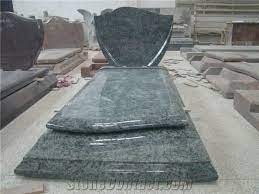Marble Monuments Manufacturing and the Improvement of the Graves
There is a flood in demand for marble and granite monuments in the United States, yet not everyone knows about the looming threat to the monument industry. A few stone companies have stopped taking new orders in an effort to satisfy the needs of their ongoing clients. In any case, there are still a lot of companies that are ramping up their production, notwithstanding the shortage. These companies are investing millions in new gear, like a hydraulic stone splitter, and have recruited in excess of twelve new laborers over the course of the last year. However, while the industry is still amidst an uncertain time, many are hopeful.
The most important phase in manufacturing a marble or granite monument is the plan. Once an artist has drawn a plan on a PC, that plan is converted into a stencil. Then, the plan is removed of the elastic stencil with a X-Acto blade or cutting machine. Then, the monument is taken into a blasting room, where abrasive particles are blasted against the granite. благоустройство могил
The cycle for carving a stone was created by John Henry Ford, who documented a patent in 1869. His detailed applications prompted his award of the Great Medal of Honor from the American Institute of City and State of New York. Ford involved this strategy in marble monuments manufacturing in West Rutland, Vermont. In the 1870s, he patented the method, and began using it in his marble industry. He also involved it for inscribe letters into stone.
Ahead of the carving, the plan should be delivered in 3D. Originally, this was done the hard way, yet these days, this cycle is most frequently carried out using PC software. Rendering is an accurate to-scale representation of the finished headstone. Among other features, rendering includes 3D shaped carvings, images, images, and lettering. In addition to the plan, the monument is finished using various methods.
Gravestones, also known as tombstones, used to be thin tablet-stones. The average gravestone was several feet tall and set a couple of feet into the ground. It was usually decorated with strict sections and epitaphes beneath the information about the departed. During the eighteenth 100 years, be that as it may, these monuments advanced from adjusted top stones to basic rectangular slab gravestones. With the utilization of innovation and a more productive manufacturing process, the expense of gravestones became more affordable and more desirable.
Granite monuments manufacturing is another vital stage in the memorial industry. In order to deliver a great monument, granite should be cut into blocks and cleaned. This cycle starts with the extraction of granite blocks from a quarry. The slab is then transported to a granite manufacturer, where it is cut into smaller blocks and cleaned with water, aluminum, and tin oxide powder. While polishing a granite monument, the granite naturally becomes darker. Be that as it may, it is feasible to reveal the original, lighter granite variety underneath the cleaned surface.
Granite monuments are very durable and resistant to climate changes and outrageous temperatures. Regardless of whether a tree branch falls on it, or a tornado spills it, a granite memorial will in any case stand up to the components. Its crystalline design means it won't disintegrate into a million pieces, and the memorial will get through the components for hundreds of years. This durability is what makes granite monuments so popular with master memorial makers.



Comments
Post a Comment